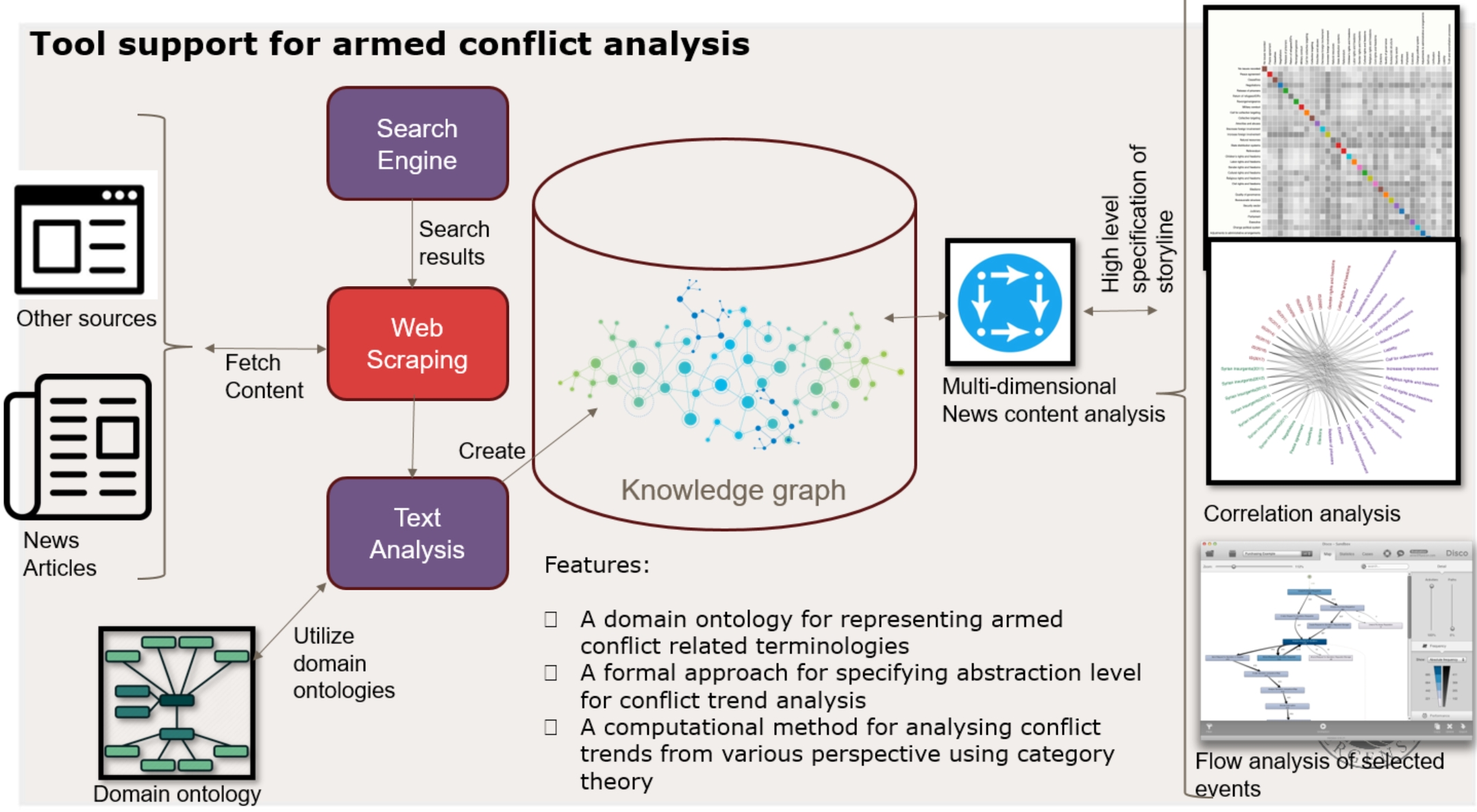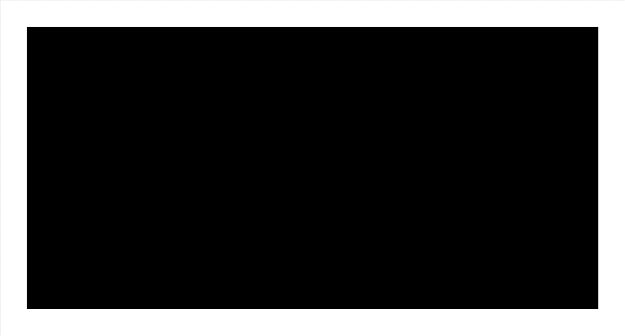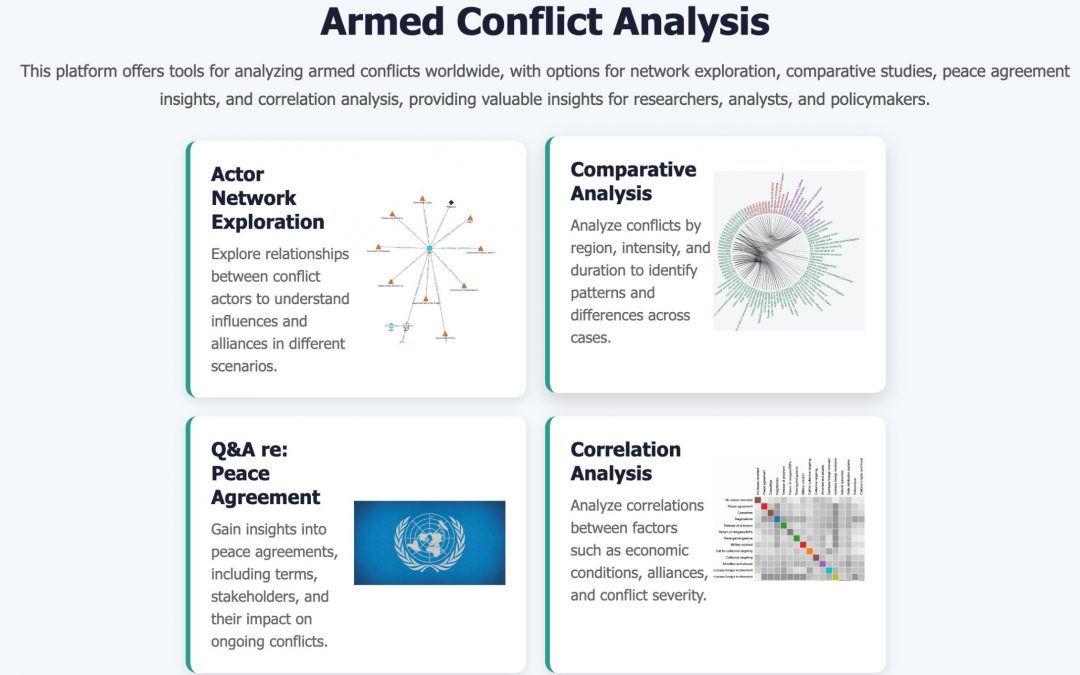Every day, news headlines report conflicts from around the world. Topics such as territorial disputes, political crises, or large-scale wars are important to cover. These events shape global politics and impact millions of lives. But keeping track of ongoing conflicts, understanding their causes, and predicting their outcomes is a huge challenge.
For journalists, researchers, and policymakers, gaining a clear picture of conflicts is crucial. However, with an overwhelming amount of news and information published daily, it is easy to get lost in the flood of reports.
To tackle this problem, Dr. Fazle Rabbi has developed a model-based framework to analyze and predict how conflicts unfold. Using category theory, graph theory, and meta-modeling, his approach provides a structured way to track and understand conflict dynamics. Inspired by Johan Galtung’s Transcend model, the tool helps users move beyond static descriptions of conflicts, instead offering a structured way to track their evolution, identify key actors, and explore pathways to resolution.
The Challenge: Understanding Conflicts in a Complex World
Conflicts do not happen overnight. They build up over time, influenced by political, economic, and social factors. Different groups such as governments, rebel forces, and international organizations have their own goals and strategies, and their interactions shape the course of a conflict.
Traditional methods of analyzing conflicts often struggle to capture these complexities. Journalists rely on news reports, political analysts study historical data, and diplomats use experience to predict outcomes. However, these approaches can miss the evolving nature of conflicts, the relationships between involved parties, and the underlying strategies at play.
Dr. Rabbi’s framework offers a new way to analyze conflict trends by structuring conflicts as dynamic processes rather than isolated events. His system helps experts compare conflict patterns, track escalation, and identify strategies that lead to resolution or further violence.
How It Works
Instead of viewing conflicts as separate events, Dr. Rabbi’s tool models them as evolving processes. It creates a structured visual representation of conflicts, including:
- Parties involved (governments, rebel groups, mediators, and other stakeholders)
- Causes (territorial disputes, ideological differences, resource scarcity)
- Escalation stages (based on Friedrich Glasl’s conflict escalation model, ranging from early tension to full-scale war)
- Potential resolutions (negotiations, ceasefires, peace treaties)

By applying category theory and graph-based modeling, the system enables users to analyze how conflicts change over time. It helps researchers track trends, compare past conflicts with ongoing ones, and identify possible outcomes.
Why This Matters
For journalists, this technology could enhance conflict reporting, helping them present a clearer and more structured view of global events. Instead of relying on fragmented reports, they could follow conflict patterns in a more systematic way.
For policymakers and peacekeepers, this tool could offer valuable insights into conflict resolution strategies, helping them predict possible escalations and intervene before tensions turn into violence.
In a time when information overload makes it harder than ever to track global events, tools like this could be game-changers—helping us understand conflicts better and work toward solutions more effectively.
Links to Related Work at PRIO
This tool aligns with ongoing research at the Peace Research Institute Oslo (PRIO), which explores conflict patterns, mediation strategies, and geopolitical trends. PRIO researchers have developed methodologies for forecasting conflicts using data-driven approaches, and this model complements those efforts by integrating structured, explainable frameworks for conflict analysis.
Studies at PRIO on conflict early warning systems, negotiation dynamics, and peacebuilding efforts further highlight the need for transparent and systematic tools to support decision-making. By combining these research insights with advanced modeling techniques, this tool represents a step forward in making conflict analysis more accessible, robust, and actionable.
Read the whole paper here:

